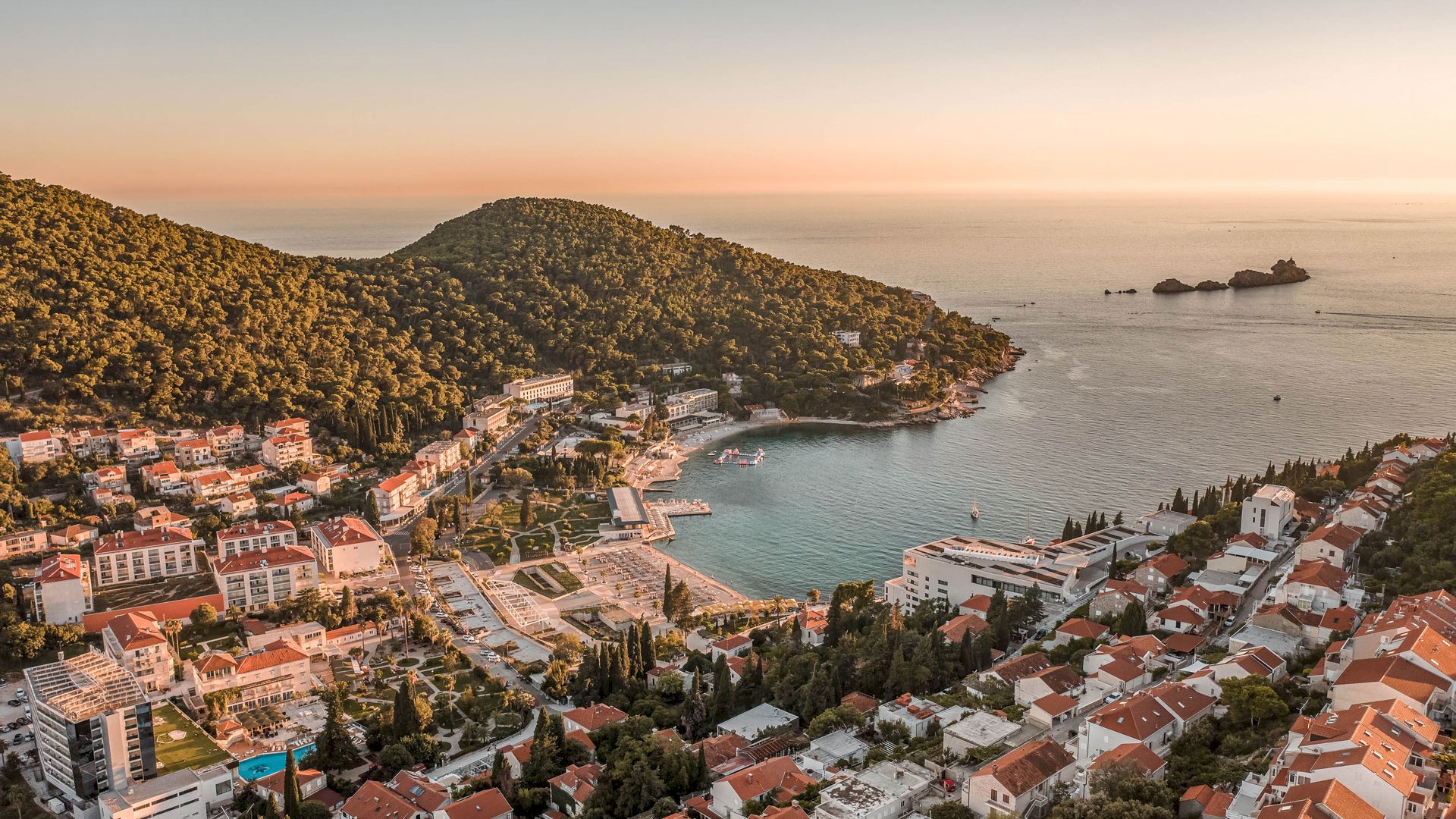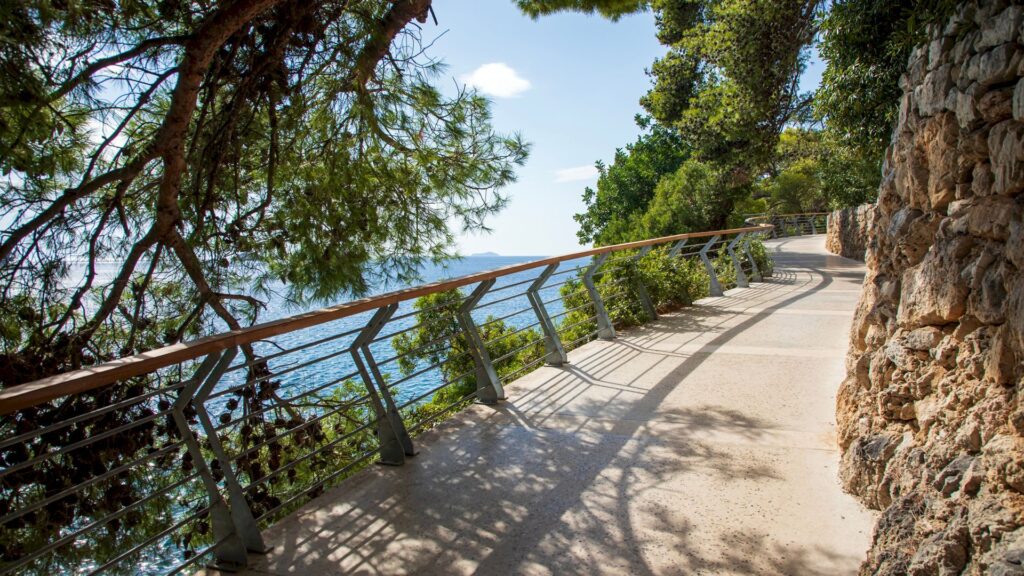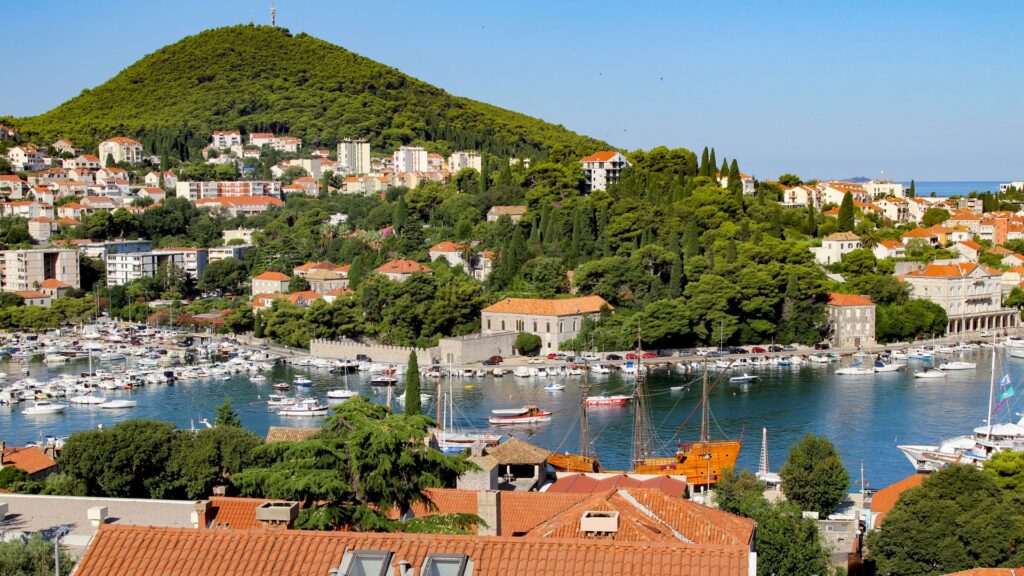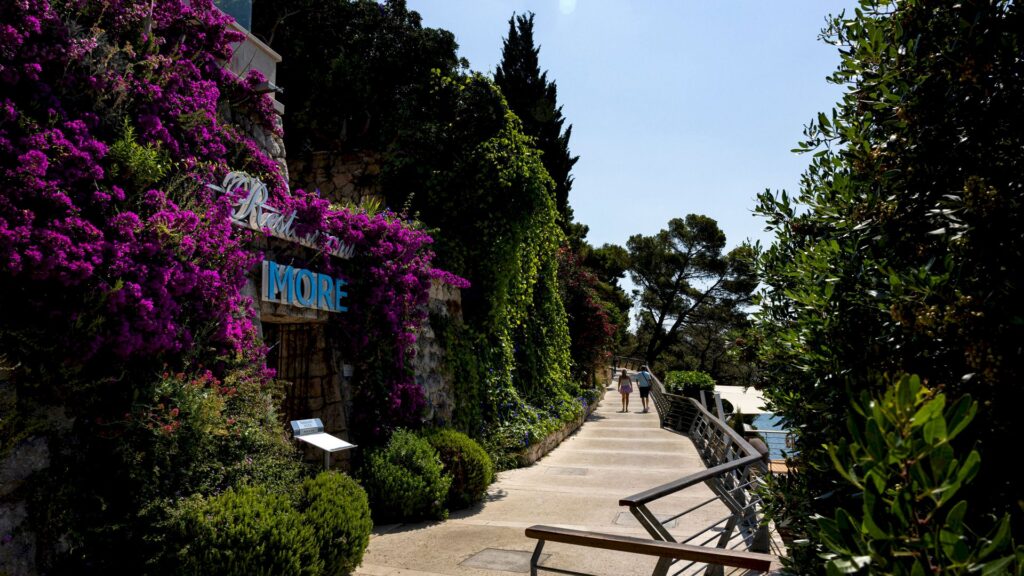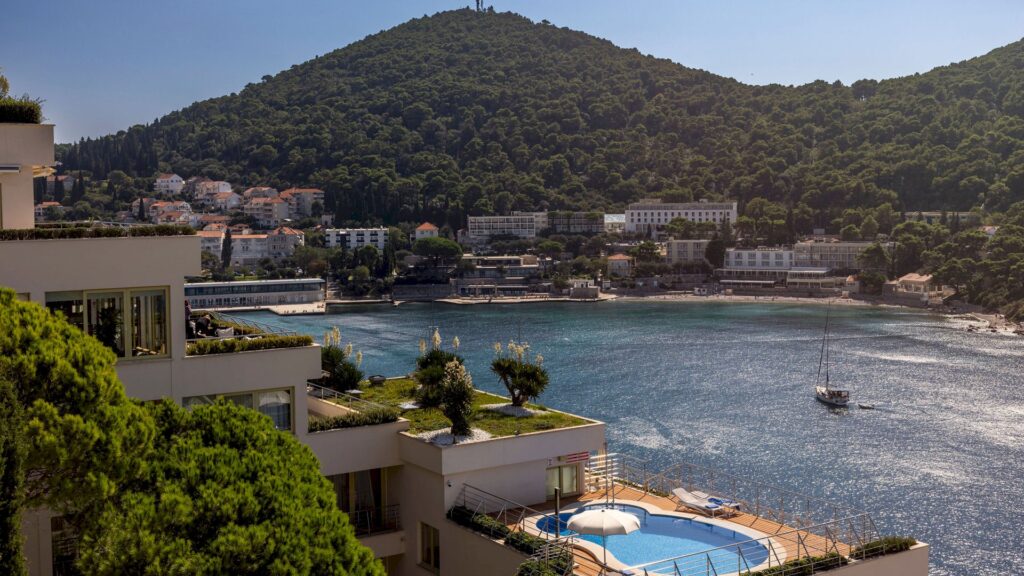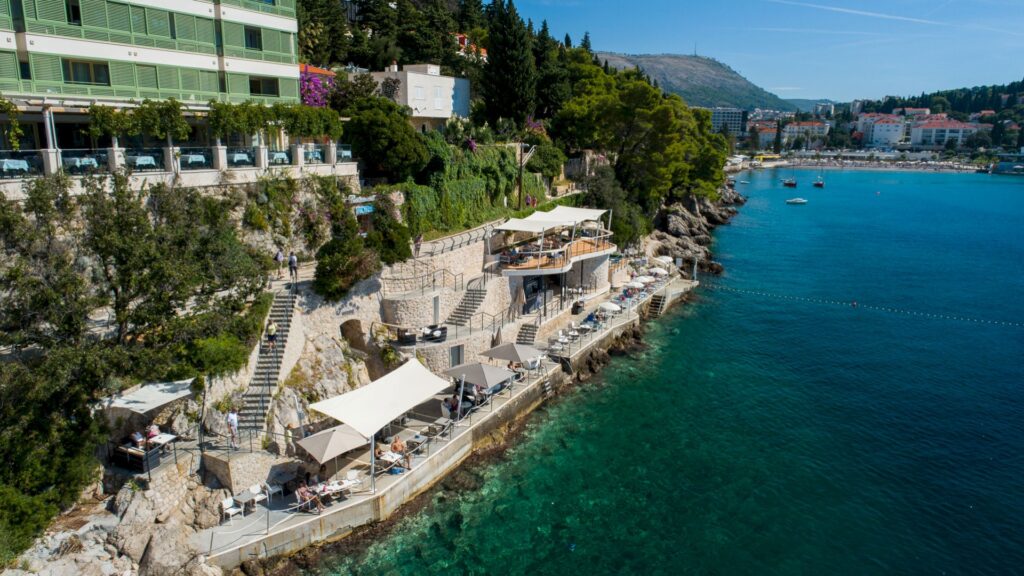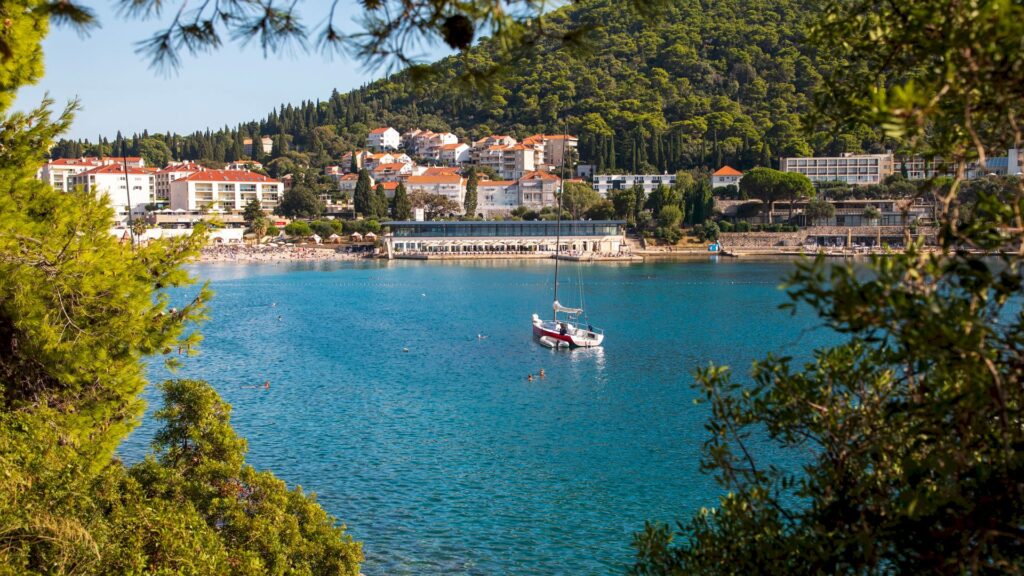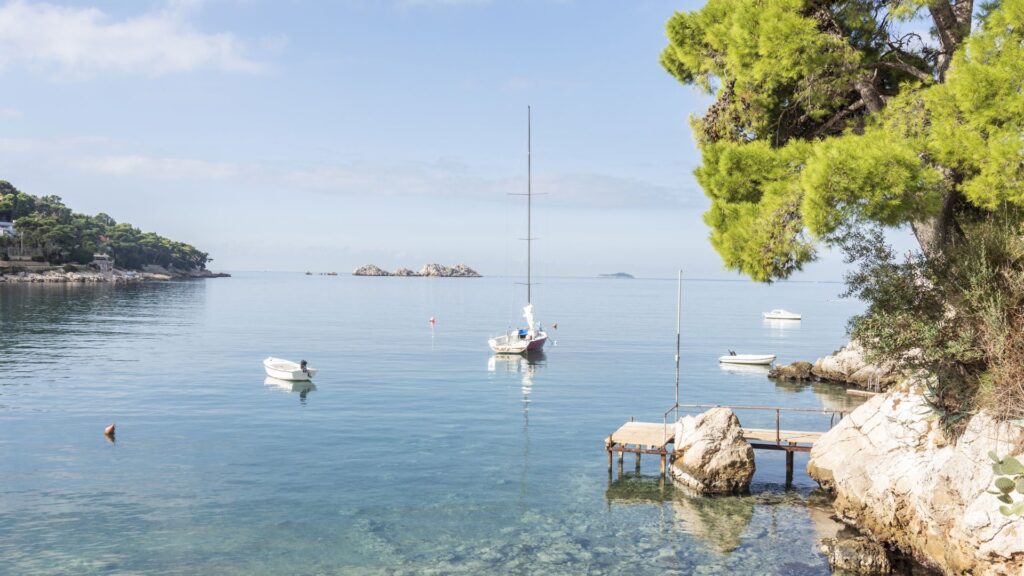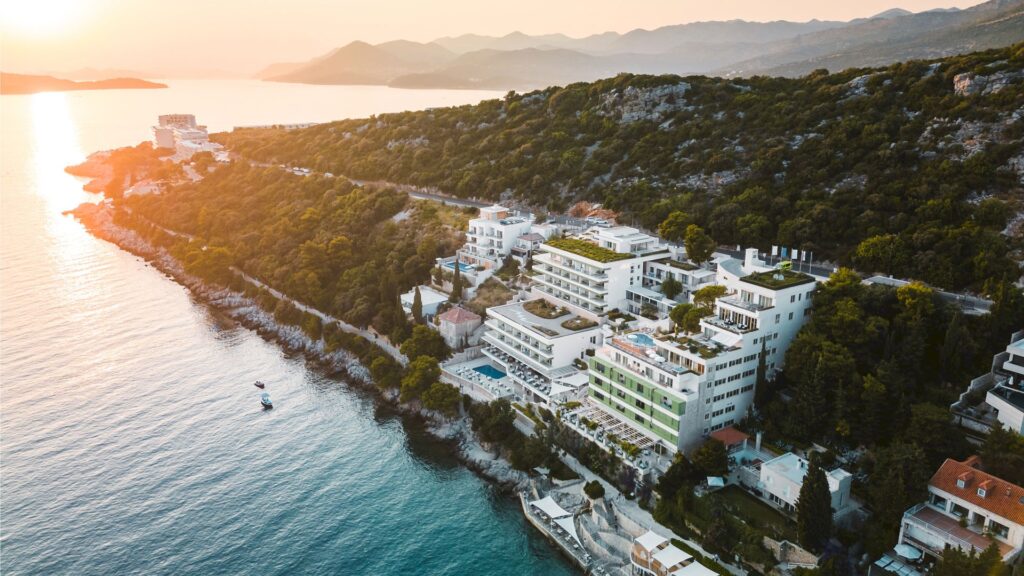Lapad – najdraža dubrovačka četvrt
The name Lapad has today become almost synonymous with ‘Uvala Lapad’ (Lapad bay), the gorgeous cove that stages the city’s best sunsets, but Lapad is much more than just a strip of beaches. This large peninsula is one the town’s biggest neighborhoods, as well as a popular destination for beachgoers, coffee-drinkers, nature lovers, walkers, hikers, and families with children.
The peninsula of Lapad juts out at Boninovo and connects back to the mainland in Gruž, at Batala, the short uphill street that was once a creek. During the city’s earliest days, everything west of the old town was called Gruž; the peninsula likewise. The first mention of Lapad by name happened in 1168; the name likely came from the word “lapide”, used to describe its rocky, karst terrain.
Those first mentions of Lapad mainly referred to the petite churches scattered all over. Some have since disappeared, some remain ruinous, but some still play a vital role in the local traditions. Such is the Church of St. Blaise at Gorica hill, originally built in the 13th century, which still has an important place in the city’s greatest celebration, the Festivity of Saint Blaise, the patron saint. While the main procession takes place in the old town on February 3, the festivities close a week later, with a mass, gathering and a festive program at Gorica Sv. Vlaha across the town.
During the Renaissance, the north-facing shores of Lapad became the town’s Riviera, luring aristocrats to build their summer estates here. Of the few that remain, the 16th-century summer residence of Petar Sorkočević is a truly eye-catching sight that shows the beauty of the Renaissance in full splendor. Poised on the corner where the shores of Gruž become the coast of Lapad, today it houses the Croatian Academy of Arts and Sciences.
Until the 20th century, Lapad remains an area of pristine nature dotted with an occasional church or waterfront villa; a total of 774 residents was recorded in 1921. Today, there are around 12,000; clearly, the 20th century was a busy one.
At its very beginning, the opening of a tram line that connected Lapad to Pile made this area more accessible and kickstarted the development of the first modern-day hotels. Hotel Lapad, located just down the street from Petar Sorkočević estate, was built in 1911, and is still today in operation. The hotels now known as Maestral, which sit directly across from hotel More, started with the hotel Splendid in 1938, and then kept adding one hotel each decade. In the 1970s, the second infrastructural boom that included expanding the network of roads, sewage and waterworks happened thanks to the construction of the expansive Babin Kuk resort complex, as well as hotel Palace.
Nowadays, Lapad is enjoying another boom, brought on by Dubrovnik’s mega popularity with visitors from all over the world. This year, hotel More is celebrating our coming of age, 18 years since we became a part of the history of Lapad.
Thankfully, much of the peninsula’s gorgeous nature sustained despite all the construction. The green Petka hills remain protected forest areas that are crisscrossed with hiking trails. A lovely footpath wraps all around the peninsula, allowing you to reach Gruž Bay from Lapad walking along the seafront all the way. Some of the city’s best-known beaches sit along that trail, as well as many parks, olive orchards, but also restaurants and cafes.
While Lapad has changed and continues to change quickly, one thing fortunately remains the same: it still has that ‘riviera feel’ to it, and a local vibe that makes you feel like you too are living the Dubrovnik life, not just visiting.
